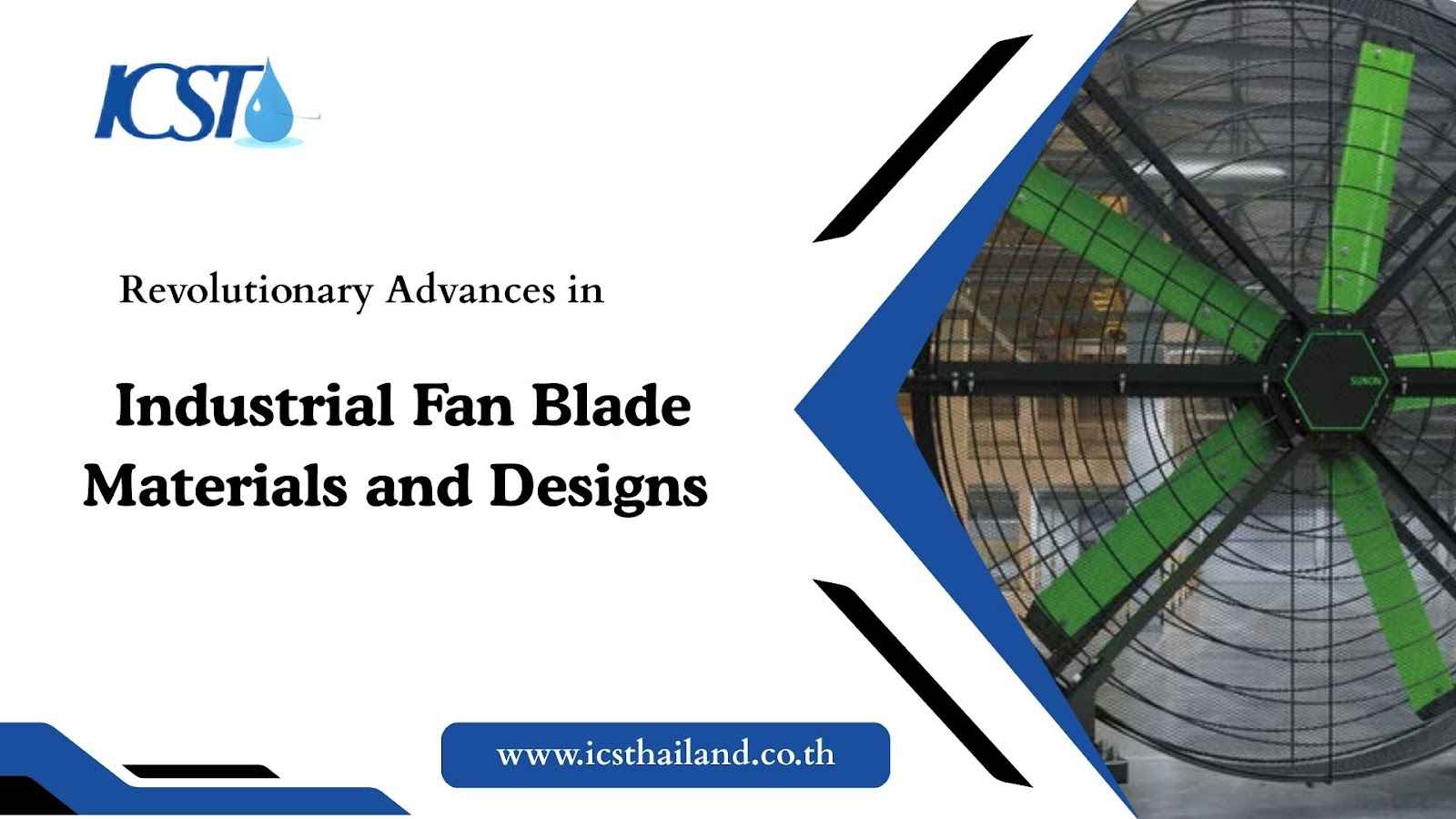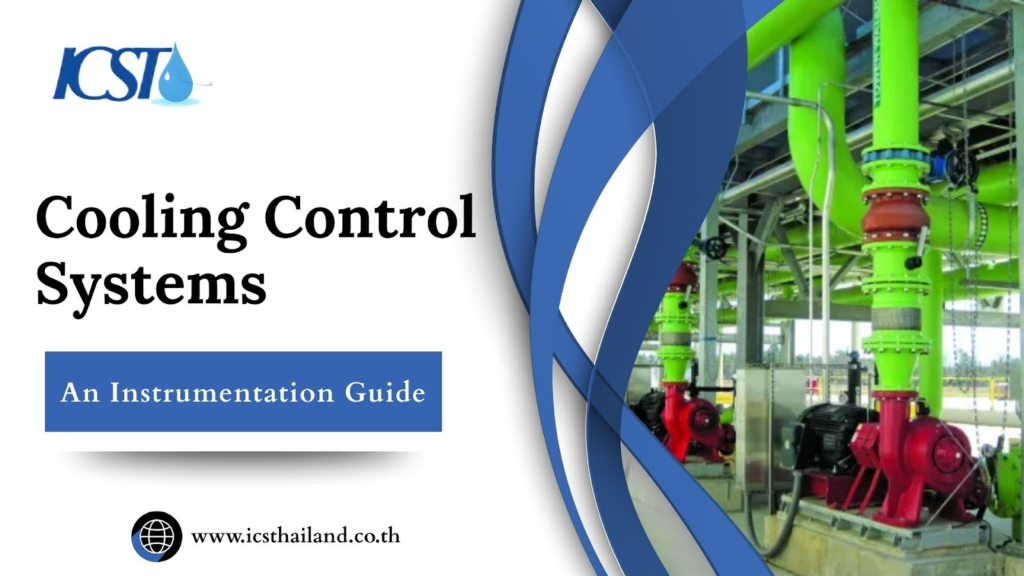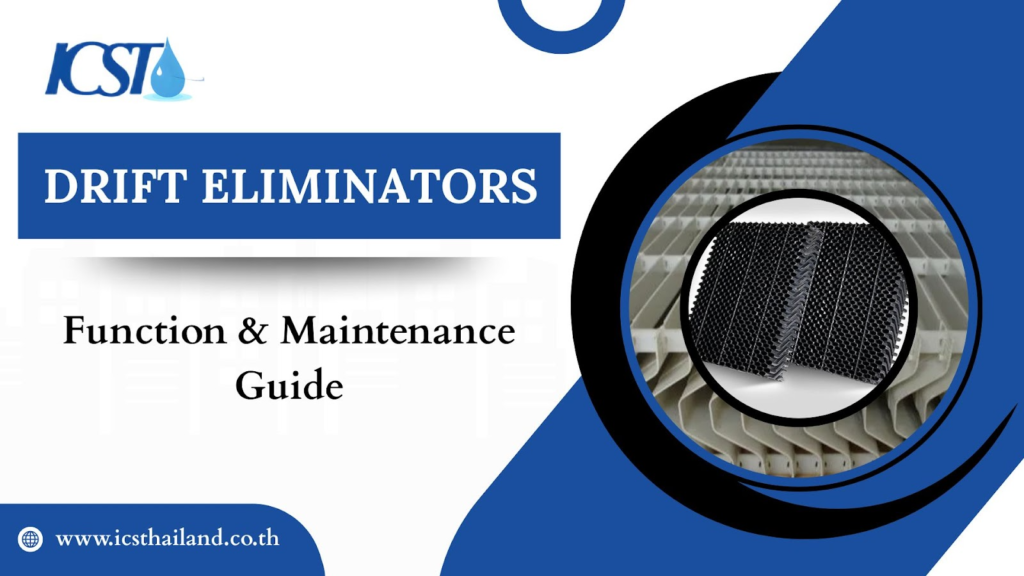Cooling towers stand as silent sentinels across industrial landscapes, rejecting heat from countless processes that power our modern world. Yet beneath their imposing structures lies a critical component that determines their effectiveness: the fan system. These fans consume the majority of a cooling tower’s energy while serving as the heart that drives vital airflow.
Industrial Fan Blade Materials have undergone a remarkable transformation in recent years, moving far beyond traditional metal constructions. Engineers and materials scientists have developed sophisticated composites and aerodynamic profiles that redefine what’s possible in industrial cooling applications.
The stakes couldn’t be higher. With energy costs soaring and environmental regulations tightening, every percentage point of efficiency improvement translates into substantial cost savings and reduced carbon footprints.
This deep dive showcases how innovations in materials and design are transforming industrial fans. With corrosion-resistant fiber-reinforced polymers and the precision of computational fluid dynamics, these advancements significantly boost efficiency, longevity, and sustainability.
Table of Contents
ToggleWhy Fan Blade Innovation Matters More Than Ever
Industrial facilities face mounting pressure from multiple directions, creating an urgent need for smarter fan blade solutions. Three key forces drive this technological revolution.
The Energy Efficiency Imperative
Fans are a significant driver of energy consumption in cooling towers, often accounting for the majority of electricity usage. By optimizing fan efficiency, facility managers can achieve measurable financial savings and reduce their environmental impact.
- Fans consume 60-80% of total electricity in cooling tower operations, making them a key focus for energy optimization.
- Minor efficiency improvements can result in substantial cost savings in the long run.
- A 15% reduction in fan energy use for a typical industrial cooling tower running 8,000 hours annually can save tens of thousands of dollars and prevent hundreds of tons of carbon emissions.
Demand for Enhanced Durability and Lifespan
Cooling towers demand robust, long-lasting solutions to withstand their unforgiving conditions.
Key challenges in cooling tower environments:
- Harsh operating conditions: High moisture levels, chemical exposure, and abrasive particles accelerate material degradation.
- Recurring maintenance: Traditional fan blades often fail within a few years, leading to frequent replacements and higher costs.
- Chemical corrosion: Chlorine-based biocides, scale inhibitors, and pH adjusters cause pitting, stress cracking, and early material failure.
- Temperature fatigue: Seasonal expansion and contraction cycles weaken metal components, leading to long-term damage.
Environmental and Noise Reduction Goals
- Regulatory agencies are focusing more on energy efficiency and noise pollution in industrial operations.
- Community relations depend on reducing the noise impact of cooling tower operations, especially near residential areas.
- Traditional fan designs cause unnecessary noise due to turbulence, vibration, and poor aerodynamics.
- Investing in energy-efficient fan technology shows environmental responsibility and helps facilities prepare for future regulations and incentive programs.
Revolutionary Materials: Building Better Blades
The materials revolution in Industrial Fan Blade Materials represents a fundamental shift from traditional approaches. Three categories of advanced materials now dominate the landscape, each offering unique advantages for specific applications.
Fiber Reinforced Polymers (FRP) and Composites: The Modern Standard
Fiber Reinforced Polymers (FRP) offer unmatched performance for cooling tower applications, making them the go-to choice for industries requiring durability and efficiency.
Engineered to withstand harsh environments, FRP blades deliver superior results where traditional materials fall short. If you’re looking to enhance your cooling tower’s performance and longevity, FRP is the solution.
Key benefits of FRP blades include:
- Corrosion Resistance: Resistant to galvanic corrosion and harsh chemicals due to advanced vinyl ester resins, significantly increasing the lifespan of equipment.
- Lightweight Design: 40-50% lighter than aluminum, reducing motor loads, energy consumption, and stress on support structures while simplifying maintenance.
- Vibration-Dampening: Naturally absorbs vibrations, leading to quieter operation and less mechanical stress on bearings and drive systems.
- Extended Service Life: Outlasts metal alternatives, often doubling or tripling service intervals for reduced downtime and maintenance costs.
Advanced Aluminum Alloys: Lightweight Powerhouses
Aluminum remains a critical material in fan blade applications, thanks to its unique combination of strength, machinability, and thermal properties.
Modern innovations in aluminum alloys and manufacturing have opened up new possibilities for designing high-performance, durable blades. Here’s a breakdown of why aluminum continues to excel in this field:
- High strength-to-weight ratio: Advanced aluminum alloys provide excellent structural integrity while remaining lightweight, enabling efficient performance.
- Superior machinability: Aluminum allows for precision manufacturing of intricate airfoil profiles, enabling aerodynamic designs that improve airflow and reduce energy usage.
- Thermal conductivity: Unlike composites, aluminum efficiently conducts and dissipates heat, making it ideal for applications with significant temperature variations.
- Hybrid designs: Combining aluminum hubs with composite blade sections offers the best of both materials, precision mounting from aluminum, and lightweight airflow properties of composites.
Specialty Plastics and Hybrids: Targeted Solutions
Engineered plastics are a great fit when balancing cost, performance, and practicality for specific applications. With advantages like corrosion resistance, lightweight properties, and affordability, these materials open doors to innovative design possibilities.
- Advanced ABS formulations and reinforced polymers offer corrosion resistance and weight advantages at competitive prices.
- Ideal for smaller exhaust fans or cooling applications where FRP’s extreme durability isn’t necessary.
- Excellent performance in humid environments due to inherent corrosion resistance.
- Lower costs promote widespread use across various facility operations.
- Hybrid blade designs combine metals for strength in root sections and composites for lightweight, corrosion-resistant outer sections.
Cutting-Edge Designs: The Science of Air Movement
Modern fan blade design transcends traditional approaches through sophisticated application of aerodynamic principles and computational analysis tools that optimize every aspect of air movement.
Aerodynamic Airfoil Profiles and Blade Pitch Optimization
Advanced fan blade technology has transformed airflow optimization, blending innovations from aerospace engineering with cutting-edge computational analysis. These modern designs ensure maximum efficiency, reduced energy waste, and adaptability to meet diverse operational needs. Here’s how these advancements work:
- Airfoil-inspired blade design: Modern fan blades feature scientifically optimized curves derived from aircraft wing technology, maximizing lift and reducing drag for smoother airflow and less turbulence.
- Precise blade pitch optimization: Computational analysis fine-tunes blade angles to ensure maximum efficiency for specific operating conditions, avoiding energy-wasting stall and noise.
- Variable pitch flexibility: The adjustable blade angles are designed to adapt to varying process needs or seasonal changes, improving efficiency and ensuring flexibility for future requirements.
Blade Count and Hub Design: Balancing Performance and Noise
Designing fan blades and hubs involves carefully balancing performance, efficiency, and cost. By tailoring the blade count, spacing, and hub geometry to specific applications, manufacturers can achieve optimal airflow, reduced noise, and energy savings.
- Blade count impacts air volume, power consumption, and noise levels, with fewer blades lowering costs while more blades improve airflow smoothness and reduce noise.
- Advanced hub designs, like air-seal disks, eliminate backflow, prevent dead zones near blade roots, and ensure even airflow distribution.
- Computational analysis fine-tunes blade spacing and hub geometry to reduce interference and pressure fluctuations, minimizing noise and maximizing efficiency.
- Proper spacing ensures structural integrity while maintaining high performance and energy efficiency.
Computational Fluid Dynamics (CFD): Designing for Precision
CFD software has revolutionized fan blade design, providing engineers with advanced tools to enhance innovation efficiently and effectively. By eliminating the need for multiple physical prototypes, it saves both time and resources, making the development process more efficient.
With its ability to simulate real-world conditions, CFD empowers teams to create designs that perform reliably in actual operating environments.
- Virtual testing of numerous fan blade designs reduces reliance on physical prototypes.
- Simulates airflow patterns with precision to identify optimal blade configurations.
- Reveals critical aerodynamic phenomena like tip vortices and pressure distributions.
- Ensures final designs perform effectively in real-world operating environments.
Tangible Benefits of Upgrading to Advanced Fan Blades
The practical advantages of modern fan blade technology translate directly into measurable improvements that justify investment costs through enhanced operational performance.
Significant Energy Savings and Reduced Operating Costs
Industrial Fan Blade Materials with advanced designs are revolutionizing energy efficiency across industrial applications. Optimized for performance, these blades not only cut costs but also align with sustainability goals, making them a smart choice for forward-thinking companies.
- Achieve 20-30% energy savings compared to conventional fan blades through reduced weight, improved aerodynamics, and optimized motor load characteristics.
- Save $15,000-$25,000 annually in electricity costs for a 100 kW cooling tower, depending on utility rates and operating schedules.
- Reduce carbon footprints to support sustainability initiatives and regulatory compliance, while meeting environmental reporting requirements.
- Demonstrate tangible emissions reductions to enhance stakeholder communications and build a greener corporate image.
Extended Equipment Lifespan and Lower Maintenance
Choosing the right materials and advanced designs for fan assemblies can drastically improve performance and lower long-term costs. By focusing on durability and reliability, companies can save money on maintenance while avoiding costly downtime.
Here’s how these improvements make a difference:
- Durable, corrosion-resistant materials and lower vibration levels help extend the life of motors, bearings, and support structures by reducing wear and tear.
- Lower maintenance requirements and fewer replacements significantly reduce operating costs.
- Savings from reduced maintenance often match or exceed energy cost reductions, delivering a major economic advantage.
- Avoiding early blade replacements and reducing bearing maintenance can lead to significant annual cost savings.
Quieter Operations and Enhanced Safety
Advanced fan blade technology is transforming industrial operations by prioritizing safety, efficiency, and reliability. These innovations not only enhance worker comfort but also reduce maintenance needs, making them an ideal solution for modern facilities.
- Sophisticated aerodynamic designs and vibration-dampening materials reduce noise levels by 3-8 decibels, improving worker safety and comfort while fostering positive community relations in populated areas.
- Reduced vibration levels minimize mechanical stress on fan assemblies, improving reliability, extending component life, and lowering the risk of maintenance-related safety hazards.
- Enhanced balance characteristics eliminate vibration-related problems, protecting nearby equipment or structures and boosting overall facility safety and operational stability.
Choosing the Right Advanced Fan Blade for Your Application
| Factor | FRP/Composites | Advanced Aluminum | Specialty Plastics |
| Corrosion Resistance | Excellent (especially with vinyl ester resins) | Good (better than steel, but can corrode in extreme conditions) | Very good (no rust) |
| Weight | Very lightweight | Lightweight | Most lightweight |
| Strength | High strength-to-weight ratio; good impact absorption | High strength; can be stiff | Moderate; improved with reinforcement |
| Energy Efficiency | High (due to lightweight & advanced airfoil designs) | High (due to lightweight & machinable airfoil designs) | Good (for smaller applications) |
| Noise Profile | Generally lower (due to material properties & vibration dampening) | Moderate (can be optimized with design) | Lower (for smaller fans) |
| Cost | Moderate to High | Moderate | Low |
Installation and Long-Term Performance Considerations
Successful implementation of advanced fan blade technology requires attention to installation details and ongoing maintenance practices that preserve performance advantages throughout equipment lifecycles.
- Proper Installation demands precise attention to blade pitch settings and dynamic balancing procedures. Incorrect pitch angles can eliminate efficiency advantages, while poor balancing creates vibration problems that accelerate wear and increase noise levels. Professional installation ensures these critical parameters meet design specifications.
- Regular Inspections should focus on leading-edge condition, attachment integrity, and overall blade geometry. Advanced materials resist many forms of degradation, but impact damage and accumulated contamination can still affect performance over time.
Conclusion
Upgrading to advanced industrial fan blade materials is essential for facilities looking to improve efficiency, reduce costs, and stay competitive. These innovative materials, paired with aerodynamic designs and precision manufacturing, deliver significant energy savings of up to 30%, quieter operation, and reduced maintenance.
By enhancing durability and performance, industrial fan blade materials are transforming operational efficiency while supporting sustainability goals. The investment not only improves day-to-day operations but also contributes to a long-term reduction in energy consumption and costs.
For businesses aiming to optimize performance, modern industrial fan blade materials are the key to achieving measurable and lasting benefits.
Ready to modernize your cooling tower? Visit our website to connect with cooling tower specialists and learn how these innovative solutions can enhance your operations.
Frequently Asked Questions
What are the advantages of FRP fan blades?
FRP blades offer superior corrosion resistance, lighter weight, energy savings, and quieter operation due to natural vibration dampening.
How do advanced fan designs boost energy efficiency?
Advanced aerodynamic designs optimize airflow to move more air with less energy, significantly improving efficiency.
Why is fan blade weight important?
Lighter fan blades reduce motor load and energy consumption, extending the lifespan of the fan assembly and saving costs.
What is CFD’s role in fan blade design?
CFD software simulates airflow, allowing engineers to precisely optimize blade shapes and designs for maximum efficiency and noise reduction virtually.
How do new fan materials lower maintenance?
New materials like FRP resist corrosion and degradation, reducing the need for frequent repairs, replacements, and routine cleaning, thus cutting long-term maintenance costs.








